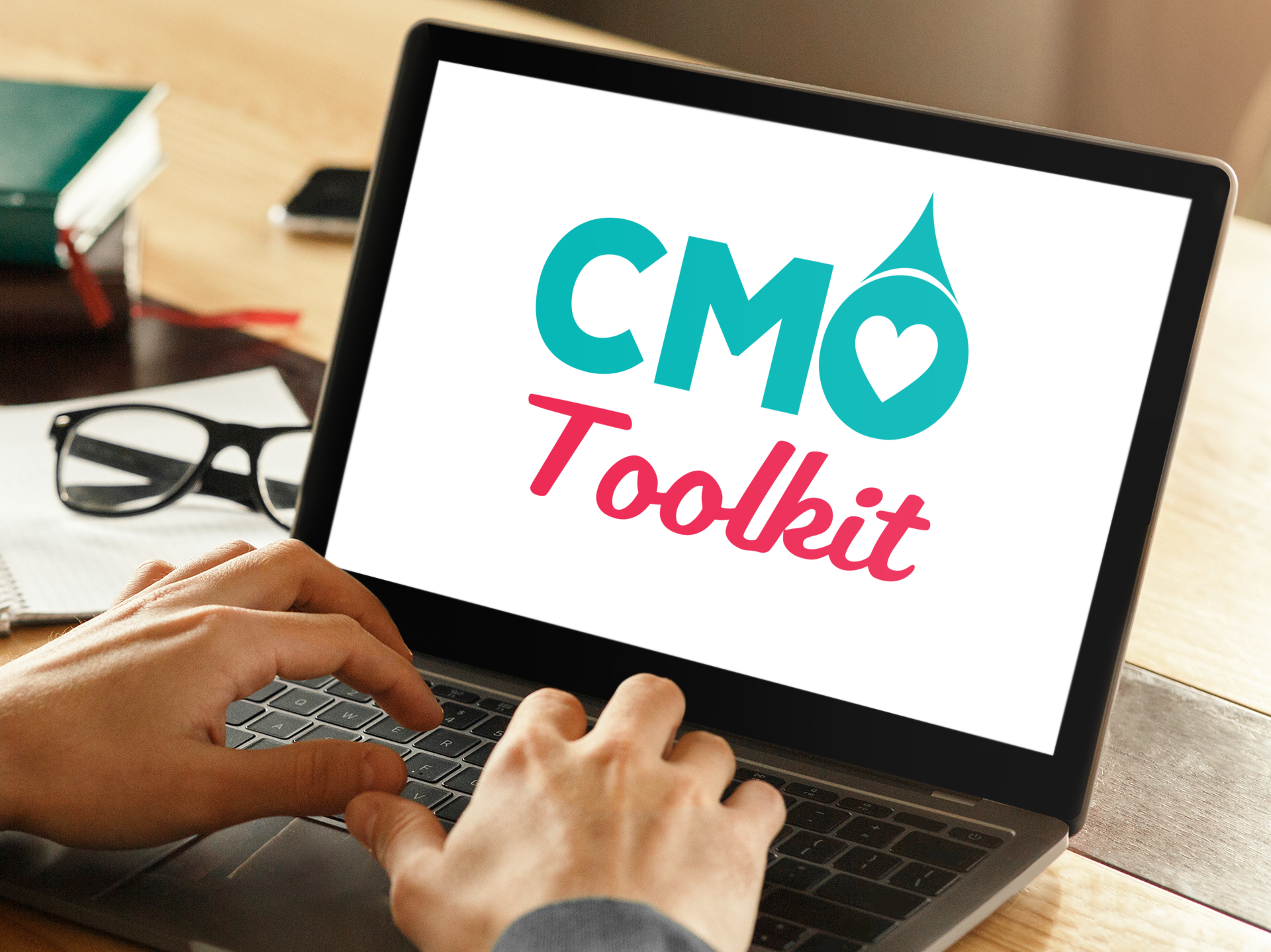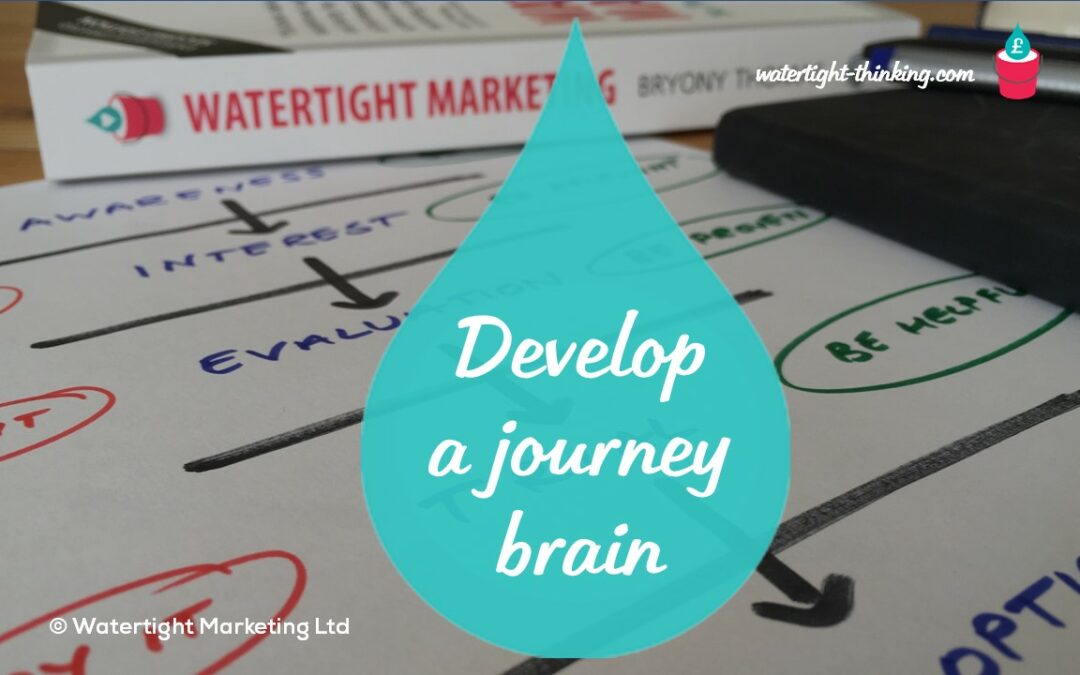Reading Time: 5 Minutes
Marketers are familiar with the customer journey. It’s the starting point for our thinking, strategies and plans. But what are the other ‘journeys’ in the business – employees, other stakeholders, growth? How can marketing contribute to and support these? In this blog, we look at how to map these journeys out and – importantly – how to ensure that all your people play their part ~ Rachael Wheatley | MD, Watertight Business Thinking
Listen to the session podcast here
49 -minute roundtable discussion on developing a journey brain.
Read the write up here
10 – minute read. The write up from the round table discussion on developing a journey brain.
When we talk about “having a journey brain”, what we’re referring to is when people in your organisation understand the various journeys that exist in your business. They know what the destination is, where they are now and the steps needed to go from here to there. They know how to work together to achieve those goals and what part they play in those journeys.
The focus in marketing is often on the customer journey – quite rightly. The purpose of business, after all, is to create customers, preferably loyal ones that stick with you. But there are other journeys which marketing can support.
Consider our definition of marketing:
“Marketing is the process of supporting someone through to a decision with which they remain happy.”
That decision could equally be taken by someone who is considering joining you as an employee. Or a funder who is thinking about investing in your business. Or a supplier who is thinking of partnering with you. All of these journeys can be mapped out and supported by marketing.
A business itself is often on a journey – be that growth, entrepreneurial or learning. Again, there will be a destination and a route to get there. And again, marketing can facilitate and support those journeys.
Mapping the journey
To map each journey, you do the same as you would for a customer journey:
- Set out your vision (destination) and goals and the values which will act as a guide for your culture, behaviour and approach.
- Understand where you are now, what you have to help you get to the destination and what you’re missing. What insight and research is needed and what engagement is required to bring your people together as one team? What are they thinking, feeling, saying, doing at each step of that journey?
- Decide what the steps are that will take you to your destination and the milestones you want to aim for. What’s the period of time between those milestones?
- Create a plan, a map.
- Determine the kit you need: tools, processes, systems, tech, materials, knowledge, skills.
- Create specific milestones. When we get here, we’ll have x number of ideal clients, with an average spend of £y, 20 more employees, a fully staffed new product development department, one more funder to invest in our software development.
- Communicate this with your people so they know the destination, can get on board with the journey and understand what their contribution will be.
As employees in a bigger team, we never work in a vacuum, and we all contribute to every journey. The IT person needs to know what tech will support any of those journeys – from the right CRM system or finance system to the operational tech that facilitates productive working or easier service delivery. The customer service person needs to know what a customer’s journey to them has involved so they can pick things up seamlessly from the sales person and they deliver a consistent experience to that new client. The HR person needs to know what kind of person will fit with the company and what skills, learning and development are required to keep that person motivated and happy and help them achieve the business’s goals. The procurement manager needs to know what kinds of suppliers will ensure a productive and warm relationship with the business. Managers need to know where their team fits in to these different journeys so that they can encourage their team members to be proactive and fully and enthusiastically contribute.
Where things start to flow and you get real traction is when everyone in the organisation truly understands these different journeys, the goals, the starting point and where they fit into the picture, how they can make a difference with their input. Often this can be facilitated with cross-organisation project teams, looking at each journey in detail, putting themselves in the shoes of the decision-maker and plugging any communications or process gaps.
A whole company endeavour
We’ve seen brilliant examples over the years of companies that positively engage their people and harness their enthusiasm, ideas and skills to make tangible progress with their journeys.
These are the companies that will win an Investors in People award or where the MDs are recognised for being the great leaders they are. These are the businesses where people connect the dots for themselves – they come off a call with a customer with a great idea for a blog which they take to the marketing team; they have a review with a client who’s suggested a new product which is then fed back to the development team; the IT person who’s sorted a difficult problem internally and realised it is equally applicable to the tech that supports clients; the manager who employs someone new and on-boards them so well that that person is happy and engaged within their first month.
Marketing is always involved in the customer journey – although not always all the way through to customer loyalty. They are often involved in the business growth journey. They are sometimes involved in employee marketing and supporting this decision. They are rarely involved in other decision journeys, though supporting them would greatly benefit the business.

Subscribe to the CMO Toolkit
Would you like to get your hands on the tools, frameworks, templates, workshop packs, slides, and analysis tools we use with our clients? It’s all waiting for you.

Rachael Wheatley
Managing Director, Watertight Thinking
Rachael brings over 30 years’ of marketing experience, with a particular focus on building and developing effective marketing teams that are able to act as a strategic driving force across an organisation. She has worked with Watertight since 2014 as a Master Practitioner and joined the business as MD in 2022.


